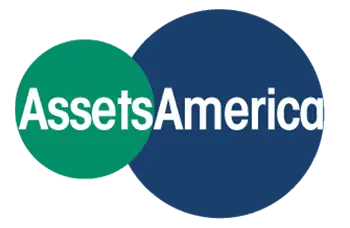Resources
Did you know that there are many ways to acquire and dispose of real estate properties? However, not all of them involve a taxable sales transaction. One type of non-taxable transaction is the Forward 1031 Exchange and its close sibling, the Reverse 1031 Exchange. The 2017 tax law changes impacted 1031 Exchanges of personal property, but like-kind exchanges of real property were unaffected.
What is a Reverse 1031 Exchange?
The 1031 Exchanges are complex transactions that allow the counterparties to defer taxes. Deferred taxes include capital gains and depreciation recapture when exchanging like-kind properties. These are properties that are exchangeable with one another because they are both U.S. domestic properties. Under Revenue Procedure 2000-37, the Treasury and the IRS issued a set of safe harbor rules for the Reverse 1031 Exchange. If you follow these rules, the IRS will not challenge your real estate transaction.
For more information, you can read the IRS Fact Sheet for 1031 Exchanges. You can also check out this real-world example of a Reverse 1031 Exchange from the SEC.
Video – Learn the 1031 Reverse Exchange Process
Reverse 1031 Exchange Terms
To understand a Reverse 1031 Exchange, it’s helpful to define some important terms:
- Relinquished Property: The like-kind property disposed of in the Reverse 1031 Exchange.
- Replacement Property: The like-kind property acquired in the Reverse 1031 Exchange.
- Exchange Accommodation Titleholder (EAT): An unrelated, third-party (usually an LLC) that holds the title of either the relinquished or replacement property. A taxpayer parks the relinquished or replacement property with the EAT until the exchange closes.
- Qualified Intermediary: Entity that sets up the EAT.
- Exchangor: The taxpayer (an individual, LLC, partnership, corporation, business or institution) who completes the Reverse 1031 Exchange transaction.
- Qualified Exchange Accommodation Agreement (QEAA): A contract between the exchanger and the EAT containing the terms for parking property under Revenue Procedure 2000-37. Here’s a real-world example of a QEAA from the SEC.
- Direct Deeding: A standard practice in which the seller deeds either property in the Reverse 1031 Exchange directly to the buyer. The seller does this without first deeding the property to the EAT.
- Exchange Period: The Exchangor’s time limit for completing the acquisition of the replacement property.
Apply For Financing
How to Use a Reverse 1031 Exchange
In a Reverse 1031 Exchange, a qualified exchange transaction occurs. The investor first acquires the replacement property, followed by the disposition of the relinquished property later. This timing is the opposite of that for a Forward 1031 Exchange. You perform this exchange to defer taxes on the sale of the relinquished property while obtaining the replacement property. By acquiring the replacement property, a Reverse 1031 Exchange lets you proceed if a problem develops with the relinquished property. You won’t jeopardize getting the replacement property when it’s available, even if you have trouble with the relinquished property. A Forward 1031 Exchange requires you to identify and successfully dispose of the relinquished property first. This can delay or prevent you from obtaining the replacement property.
Parking Arrangement for a Qualified Exchange
To facilitate the safe-harbor Reverse 1031 Exchange under a QEAA, the neutral EAT accepts title to a property. The property remains parked until all parties are ready to complete the qualified exchange. At that time, a simultaneous exchange occurs with each party receiving the other property.
Reverse 1031 Exchange Structures
You have a choice between two Reverse 1031 Exchange structures under the Safe Harbor rules:
- Exchange Last: The simultaneous exchange occurs at the end of the Reverse 1031 Exchange. This is more flexible for financing and structuring the transaction. You park the replacement property with the EAT at the start of the exchange period. You then complete the transaction by disposing of the relinquished property by the end of the exchange period. Because you must first obtain the replacement property, you will need a loan while doing an exchange last transaction. The replacement property held by the EAT serves as collateral for the loan. You can refinance the loan once the Reverse 1031 Exchange is complete.
- Exchange First: The simultaneous exchange occurs at the beginning of the Reverse 1031 Exchange. In this structure, you directly acquire the replacement property while transferring the relinquished property’s title to the EAT. Lenders prefer this structure because the EAT doesn’t hold the title to the collateral property. The downside is that it traps your equity in the relinquished property. This means you must advance the equity amount as the down payment for your loan. You might not have that kind of cash available, which is why most investors prefer the exchange last structure.
Other structures are available for a non-safe-harbor exchange.
Reverse 1031 Exchange Structure Considerations
You should consider the following when choosing a Reverse 1031 Exchange structure:
- Operations: Does parking a property create operational problems? Will a change in title affect tenants or vendors?
- Risk Management: Will the EAT have any problems accepting title? For instance, is the property toxic or does it have operational problems?
- Insurance Coverage: The EAT might have trouble obtaining insurance if it’s a single-member LLC, especially if construction occurs during the transaction period.
- Financing: Transferring already-financed properties to the EAT might trigger on-sale clauses.
- Liquidity: To ensure deferment of all taxes, investors must ensure that they:
- Trade or exchange property that is equal or higher in value
- Reinvest all the net cash proceeds from the sale of relinquished property
- Refinance any debt on the replacement property
How to Qualify for a Reverse 1031 Exchange
Now that you know how to use a Reverse 1031 Exchange, you need to understand how to qualify the exchange using an EAT and a QEAA.
EAT Qualification Rules
You transfer property to the EAT, which is usually an LLC. In this way, the taxpayer doesn’t hold the property. You must inform the EAT as to whether the property is the replacement or relinquished property.
The EAT must own the property’s qualified indicia of ownership, including any of the following:
- Legal title to the held property, or
- Other indicia of beneficial ownership of the property recognized by the state in which the property resides, or
- Interests in a disregarded entity (as the IRS defines it), such as a single-member LLC or Subchapter S corporation. This entity must satisfy either of the first two points.
Furthermore, the EAT cannot be a related party or an investor acting on its own behalf. The EAT is a taxable entity. The qualified intermediary might make the EAT an S Corporation or a partnership. If so, the shareholders or partners must hold more than 90% of the shares or interests. The shareholders or partners pay federal income tax. You must observe the various deadlines (see below) while executing a Reverse 1031 Exchange.
QEAA Qualification Rules
The investor and the EAT must execute a written QEAA, which must specify the following:
- The EAT holds the parked property for the benefit of the investor who is transacting a Reverse 1031 Exchange under the IRS safe harbor rules.
- The investor and the EAT must report the transaction on their tax returns. This includes reporting the acquisition, title parking and final disposition of the property.
- For IRS purposes, the EAT beneficially owns the parked property.
During the parked period, the investor receives any profits from the parked property and assumes responsibility for any losses. The EAT issues a triple-net lease to the investor. The investor is then responsible for managing the property, either directly or through a third-party management agent.
Finally, you can read these Real Estate Tax Tips for Like-Kind Exchanges from the IRS.
Timeline of a Reverse 1031 Exchange
The following deadlines apply to a Reverse 1031 Exchange:
- The investor and EAT must sign a QEAA within five business days after transferring the property to the EAT.
- Within 45 days of transferring the replacement property to the EAT, the investor must identify the relinquished property. This is moot if the EAT instead holds the relinquished property instead (an exchange-first structure).
- The QEAA can hold the relinquished and replacement properties for no longer than 180 days.
Related Articles

